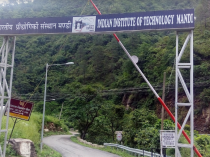How does the IIT Ropar CSE cutoff compare with that of IIT Patna and IIT Mandi?
-
1 Answer
-
For the General AI quota, the IIT Ropar CSE cutoff 2025 ranged between 2357 and 2512. For IIT Patna, the cutoff range was between 3215 and 3377. Similarly, for IIT Mandi, the cutoff range was between 3087 and 3123 in the General category. So, considering the cutoff range, the IIT Ropar cutoff for CSE was comparatively more competitive for admission among the Engineering aspirants as compared to that of IIT Patna and IIT Mandi, as they have relaxed cutoffs for BTech admission.
Similar Questions for you
Overall, 50-55% seats are reserved in IITs. The break-up of reservation is - 27% for OBC-NCL, 15% for SC, 7.5% for ST, 10% for Gen-EWS and 5% horizontal reservation for PwD candidates.
Physics is the most difficult of all three subjects asked in the JEE Advanced exam. Many students also finds Maths as the toughest. It largely depends upon the understanding of candidates and how well the students are equipped with basic knowledge of any subject.
It is mandatory to appear in both papers of JEE Advanced exam. The total marks are calculated by adding the sum of scores in both papers.
JEE Advanced question paper will be available online on the website jeeadv.ac.in. IIT Roorkee will release both paper 1 and 2 on the same day or the next day of exam.
JEE Advanced question paper 2026 will be released by IIT Roorke after the exam. The question paper is usually released on the same day or the next day of the exam. Candidates will be provided the download link ofthe paper on this page once released.
Taking an Exam? Selecting a College?
Get authentic answers from experts, students and alumni that you won't find anywhere else
Sign Up on ShikshaOn Shiksha, get access to
- 66k Colleges
- 1.2k Exams
- 680k Reviews
- 1800k Answers



